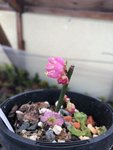Canada Bonsai
Shohin
- Messages
- 465
- Reaction score
- 1,390
@River's Edge I was reading through old International Bonsai magazines, and came across an article from 1982 (no.1) written by Tomigoro Komaki on the propagation of prunus mume.
He recommends taking dormant cuttings in February, and fully burying them for a month in sand. 4 weeks later he digs them up, and the cuttings that have developed callous are planted.
Frank taking cuttings in November has obviously worked for you. Have you happened to try January or February yet? I wonder if there is a difference in terms of physiology (@0soyoung ?)
It's worth noting that this article is nearly 40 years old
He recommends taking dormant cuttings in February, and fully burying them for a month in sand. 4 weeks later he digs them up, and the cuttings that have developed callous are planted.
Frank taking cuttings in November has obviously worked for you. Have you happened to try January or February yet? I wonder if there is a difference in terms of physiology (@0soyoung ?)
It's worth noting that this article is nearly 40 years old






